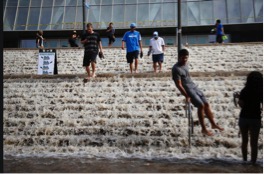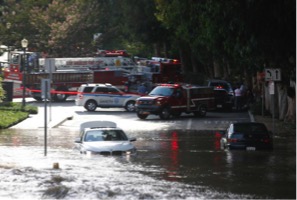The State of U.S. Drinking Water Infrastructure: Challenges and Solutions Since 2013, the American Society of Civil Engineers has consistently rated the U.S. drinking water infrastructure poorly, giving it a "D" grade. This rating highlights the urgent need for investment and maintenance. Much of the nation’s water system was built over 50 years ago, with some pipes dating back more than a century. Today, there are over one million miles of water mains across the country, but many of these are in poor condition, posing serious risks to public health and safety. Impact
The consequences of aging infrastructure are far-reaching. When large-diameter pipes fail, it can cause major disruptions in water supply, damage property, and even threaten other critical systems like power grids and transportation networks. However, the most significant losses occur through smaller leaks that go unnoticed. According to the Water Research Foundation, utilities experience an average of 0.21 to 0.27 pipe breaks per mile annually. These incidents not only waste millions of gallons of water each day but also pose health risks due to potential contamination or service interruptions. Costs
The financial burden of maintaining and replacing this aging infrastructure is staggering. The American Water Works Association (AWWA) estimates that replacing all existing pipes could cost over $1 trillion. Over the next 25 years, the total cost of repairing and expanding water and wastewater systems could reach $2 trillion. In addition, around 250,000 water mains break every year, and about 2 trillion gallons of water are lost due to leaks and breaks. A 2012 study by Utah State University found that water utility costs from pipe failures ranged from $6,000 to $7.5 million, with nearly half of these expenses tied to property damage claims. Funding Crisis
A major obstacle to improving the infrastructure is the lack of consistent funding. From 2008 to 2012, federal funding for water infrastructure fell significantly, totaling just $6.9 billion—only 8% of what the EPA identified as needed over 20 years. With both aging pipes and limited resources, the risk of a full-blown water crisis grows. Without immediate action, communities across the country could face increasing service disruptions, higher costs, and greater environmental impact. Solutions
The Environmental Protection Agency (EPA) is working on long-term strategies to improve water infrastructure sustainability. One effective approach is rehabilitating existing systems rather than replacing them entirely. HJ3 Composite Technologies offers innovative solutions using carbon fiber reinforcement, which extends the life of pipes at a fraction of the cost of replacement. Their patented CarbonSeal technology is approved for use in potable water systems and has been successfully applied in various repair projects nationwide. If you're facing issues with underground pipes and want to explore cost-effective repair options, consider reaching out to HJ3 for more information on their advanced rehabilitation systems. By investing in smart, sustainable solutions, we can protect our water infrastructure for future generations. Contact HJ3 at [insert contact information] to learn more about how they can help maintain your water system efficiently and affordably. Pilfer Proof Cap Production Lines Ropp Caps Making Line,Wine Caps Making Machine,Aluminum Cap Making Machine,Pilfer Proof Cap Production Lines Zhoushan Golden Wing Machinery Co., Ltd. , https://www.goldenwingmachines.com

July 12, 2025